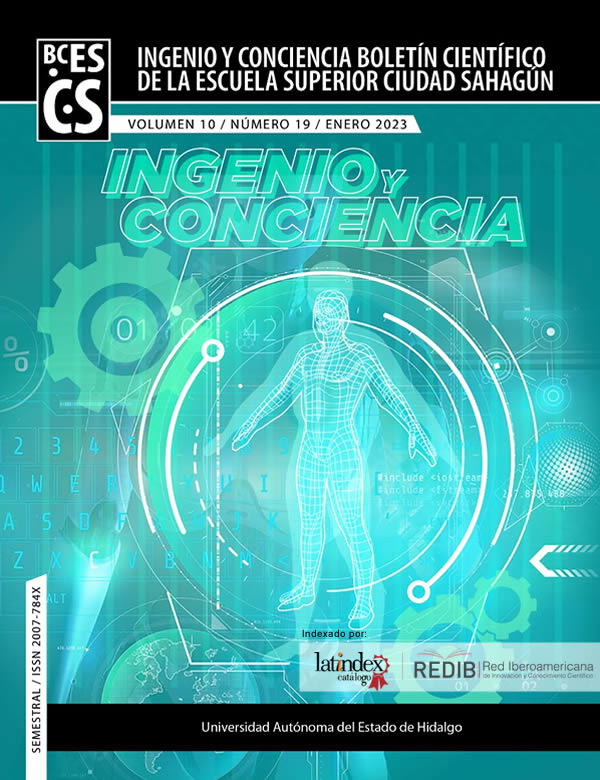Programming of properties applied to absorption refrigeration systems
Abstract
This work aims to develop a computational model that helps to predict the thermodynamic properties of the CaCl2-LiBr-LiNO3-H2O mixture, which can be used for the analysis and simulation of absorption refrigeration systems. The study is based on the multiple interpolation methodology developed in the Engineering Equation Solver (EES) software and the values obtained are compared with those obtained experimentally. The results show that the developed model adequately predicts the properties of vapor pressure, specific enthalpy, and specific heat and the maximum deviation percentages obtained are 9.34%, 0.027%, and 0.15%, respectively. In addition, the simulation results show that, for the same operating conditions, a COP error of 4.58% is obtained when the system operates at an effectiveness of 1.0 (100% of its capacity), while the smallest COP error of 1.02% is obtained at the effectiveness of 0.6 (60% of its capacity), in comparison with the results presented in the literature.
Downloads
References
Ahmad T., Azhar Md., Sinha M.K., Meraj Md., Mohammed Islam., Ahmad A., 2022. Energy analysis of lithium bromide-water and lithium chloride-water based single effect vapour absorption refrigeration system: A comparison study. Cleaner Engineering and Technology, 7, 100432. DOI: 10.1016/j.clet.2022.100432
Chen, D., Xie, J.H., 2006. Heat Pump Water Heater. Chemical Industry Press, Beijing, pp. 201.
Chen Y., Zhou T., Zhao T., He Y., 2022. Thermodynamic analysis of H2O−3-aminopropyl tributyl phosphonium glycinate as a working pair for absorption refrigeration system. Applied Thermal Engineering, 213, 118658. DOI: 10.1016/j.applthermaleng.2022.118658
Du S., Wang R.Z., Lin P., Xu Z.Z., Pan Q.W., Xu S.C., 2012. Experimental studies on an air cooled two stage NH3-H2O solar absorption air-conditioning prototype. Energy, 45, 581-587. DOI: 10.1016/j.energy.2012.07.041
Fernández-Seara J., Vázquez M., 2001. Study and control of the optimal generation temperature in NH3-H2O absorption refrigeration systems. Applied Thermal Engineering, 21, 343-357. DOI: 10.1016/S1359-4311(00)00047-8
Fernández-Seara J., Sieres J., 2006. Ammonia-water absorption refrigeration systems with flooded evaporators. Applied Thermal Engineering, 26, 2236-2246. DOI: 10.1016/j.applthermaleng.2006.03.011
Florides, G.A., Kalogirou, S.A., Tassou, S.A., Wrobe, L.C., 2003. Design and construction of a LiBr-water absorption machine. Energy Conversion and Management 44, 2483–2508. DOI: 10.1016/S0196-8904(03)00006-2
He, Z.B., Zhao, Z.C., Zhang, X.D., Feng, H., 2010. Thermodynamic properties of new heat pump working pairs: 1, 3-dimethylimidazolium dimethyl phosphate and water, ethanol and methanol. Fluid Phase Equilibria 298, 83–91. DOI: 10.1016/j.fluid.2010.07.005
Jawahar C.P., Raja B., Saravanan R., 2010. Thermodynamic studies on NH3-H2O absorption cooling using pinch point approach. International Journal of Refrigeration, 33, 1377-1385. DOI: 10.1016/j.ijrefrig.2010.04.015
Jiang, X., Cao, Z., 2003. A group of simple precise formulations for properties of water and steam. Power Engineering 23, 2777–2780.
Kilic M., Kaynakli O., 2007. Second law-based thermodynamic analysis of water-lithium bromide absorption system. Energy, 32, 1505-1512. DOI: 10.1016/j.energy.2006.09.003
Li N., Luo C., Su Q., 2018. A working pair of CaCl2 –LiBr–LiNO3/H2O and its application in a single-stage solar-driven absorption refrigeration cycle. International Journal of Refrigeration, 86, 1-13. DOI: 10.1016/j.ijrefrig.2017.11.004
Ma W.B., Deng S.M., 1996. Theoretical analysis of low-temperature hot source driven two-stage LiBr/H2O absorption refrigeration system. International Journal of Refrigeration, 19, 141-146. DOI: 10.1016/0140-7007(95)00054-2
Monné C., Alonso S., Palacín F., Guallar J., 2011. Stationary analysis of a solar LiBr-H2O absorption refrigeration system. International Journal of Refrigeration, 34, 518-526. DOI: 10.1016/j.ijrefrig.2010.11.009.
Patel H.A., Patel L.N., Jani D., Christian A., 2016. Energetic analysis of single stage lithium bromide water absorption refrigeration system. Procedia Technology, 23, 488-495. DOI: 10.1016/j.protcy.2016.03.054
Rogdakis E.D., Antonopoulos K.A., 1992. Performance of a low-temperature NH3-H2O absorption-refrigeration system. Energy, 17, 477-484. DOI: 10.1016/0360-5442(92)90083-C
Soliman A. S., Zhu S., Dong J., Cheng P., 2021. Design of an H2O-LiBr absorption system using PCMs and powered by automotive exhaust gas. Applied Thermal engineering, 191, 116881. DOI: 10.1016/j.applthermaleng.2021.116881
Sun D.W., 1998. Comparison of the performances of NH3-H2O, NH3-LiNO3 and NH3-NaSCN absorption refrigeration system. Energy Conversion and Management, 39, 357-368. DOI: 10.1016/S0196-8904(97)00027-7
Wang Y., Lior N., 2011a. Proposal and analysis of a high-efficiency combined desalination and refrigeration system based on the LiBr–H2O absorption cycle—Part 1: System configuration and mathematical model. Energy Conversion and Management, 52, 220-227. DOI: 10.1016/j.enconman.2010.06.071
Wang Y., Lior N., 2011b. Proposal and analysis of a high-efficiency combined desalination and refrigeration system based on the LiBr–H2O absorption cycle—Part 2: Thermal performance analysis and discussions. Energy Conversion and Management, 52, 228-235. DOI: 10.1016/j.enconman.2010.06.064
Yamamoto E., da Silva R., Higa M., 2022. Performance improvements on energy and exergy basic for an ammonia-water absorption refrigeration system in a coffee industry. Sustainable Energy Technologies and Assessments, 52, 102284. DOI: 10.1016/j.seta.2022.102284
Zhou S., Guogeng H., Liang X., Li Y., Pang Q., Cai D., 2022. Comparison of experimental performance of absorption refrigeration cycle using NH3/LiNO3+H2O working fluids with different component proportions. International Journal of Refrigeration, 139, 25-40. DOI: 10.1016/j.ijrefrig.2022.04.01











